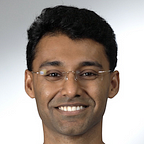Why has High Frequency Trading (HFT) stopped minting money?
When a technology works, it looks magical
From 1993 to 2013, Sir Alex Ferguson and Manchester United had won the English Premier League 13 times. That’s an amazing record. Think of a fund manager topping the hedge fund charts thirteen years. That has never happened. There must be a reason, right? The reason was that ManUtd and Sir. Alex Ferguson had come up with a technology which others did not have. They would scout clubs in Europe for talented youngsters and be willing to pay top dollar for young stars without a proven track record at a big club. On 12th August 2003, they got Christiano Ronaldo in the same way at a world record sum for a teenager. The investment paid huge dividends and earned a profit!
When something works, an ecosystem develops around the new technology
In subsequent years, a lot of clubs in England and continental Europe perfected the same machinery of feeder clubs and super agents that led Manchester United to success.
When everyone has that technology, it becomes costly and loses its edge
Fast forward a decade and this method did not work with Paul Pogba. They paid a lot for him but without integrating him into the first team, Pogba left on a free transfer. They had to pay a 100 million to get him back and he is nowhere near Ronaldo in his impact. The reason for this failure is simple. Most clubs now have this technology. For every talented youngster, there are thirty or so clubs who have figured out the scouting process to get them, court them, pay top dollar for them and figure out the immigration aspects.
High Frequency Trading (#HFT) isn’t making money today
Arxis Capital closed down this week. They had raised about $150 million in investment capital from Crestview Partners and others. For a while, it was making tighter prices than other electronic market makers. They did not do anything wrong. They got a great team with relationships needed to get order flow from brokers. The founding team of Gene Reilly and Tom Joyce had led billion dollar operations earlier. It just did not work.
Not just them, look at all three publicly listed HFT firms: Virtu Flow Traders and Knight Capital Getco. They have been losing money practically every quarter for their shareholders, while financials and the market has been on a tear!
There are some successes. I personally know a few people who are still earning millions from HFT today. My own investment firm is doing well as well. But it’s a lot more work and lower margins for even successful firms.
Today the successes in HFT are few. The trading horizon is much longer. Most HFT firms are becoming service providers of longer duration traders, and wisely so.
Are tougher times for Wall Street’s Flash Boys here to stay?
In this FT article, while they are still stuck with the misconception of flash orders having any relevance to HFT, they do talk about three reasons why HFTs are losing money for shareholders:
- Low volatility, and less panic. i.e. others have gotten smarter
- Increase in competition
- High cost of entry and less innovation.
What was the technology that led to High Frequency Trading?
HFT started by bringing a machine-learning approach to trades that humans were already doing. In early 2000s quants were constrained to “pricing” and making intergable mathematical models that could be used in long-term trading. The biggest demand was still for pricing of derivatives and structured products related to the housing market. However that was just the tip of the iceberg. HFTs demonstrated that machine learning can be used to process every sort of data in markets and do better than humans at all but the most complex trades.
HFT was a pure ML approach these two trades: (1) Market Making and (2) Statistical Arbitrage. The technology was just right for HFT. Prior to 2005, we were trading with simple dell servers running C++ programs on a Linux OS, and that was enough to handle every data packet coming from exchanges.
Machine Learning had advanced a lot in the tech boom but much of that had not reached Wall Street. Quant firms were still clinging to mathematical formulas and models that would ignore real world factors like friction, demand supply, risk, commissions, latency. Some progressive firms had the vision to see the potential of an unfettered computer science approach. I was lucky to join such a firm. I was brimming with ideas from my education at Wharton but the vision of people like Prashant Lal, John Martello, (late) David Wichs, William Chuang, Saurav Jindal, to choose one path among the thousand available at the time to pursue, that vision is what led the firm to become a leader in HFT.
Check out the video below to see machine learning concepts that have proved useful in trading.
Departures signal a change in guard of HFT
In this FT article, Nicole Bullock shows definite proof of the business having hard times. Due to the prop nature, real data is often hard to come by. But we see heads of top HFT organizations like Cameron Smith of Quantlab, Daniel Coleman of KCG, Eric Noll of Convergex, Misha of Teza all having to exit the business partly due to poor results, high costs or just becasue they can earn much more money doing something else.
The technology in HFT still works. It just has lower rewards and more risk
HFT is just like any other technology powered business. When you look at past trades, and the evolution of trading, the same has happened to other trades.
Read more on Why is proprietary trading dying?
